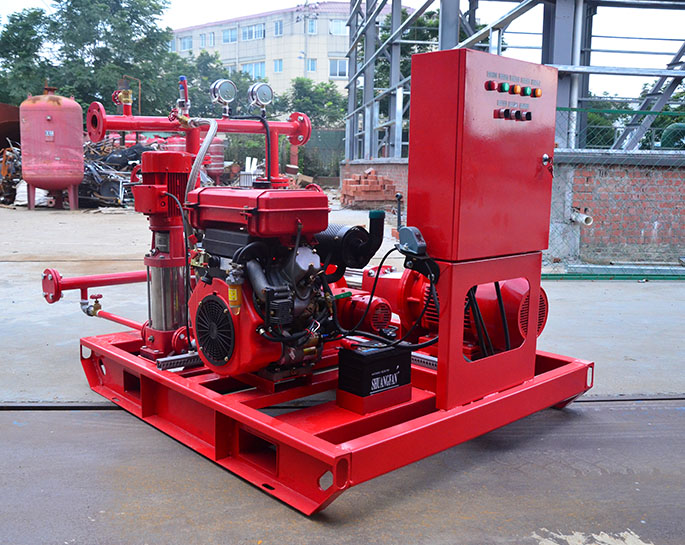What are the selection methods for fire pumps?
Selecting the appropriate fire pump is crucial to ensure that it meets the specific needs of the building or facility and complies with relevant regulations and standards. The selection process involves considering factors such as water supply, building size, hazard classification, and system requirements. Here are some common methods used for selecting fire pumps:
-
Hydraulic Calculation Method: This method involves performing hydraulic calculations to determine the required flow rate and pressure for the fire protection system. The calculations take into account factors such as the building size, hazard classification, and required water coverage. Once the required flow rate and pressure are determined, the appropriate fire pump can be selected to meet these criteria.
-
Water Supply Analysis: Analyze the available water supply sources, such as municipal water lines, on-site storage tanks, or natural bodies of water. Consider factors like the available flow rate, pressure, and duration of water supply. The fire pump selected should be able to deliver the required flow and pressure based on the available water supply.
-
Performance-Based Approach: This method involves evaluating the specific fire protection needs of the building or facility. Consider factors such as the type of occupancy, fire hazards, and desired level of fire protection. Work with fire protection engineers to develop a performance-based design that meets the desired outcomes. The fire pump is then selected to fulfill the requirements of the performance-based design.
-
Code and Standard Requirements: Refer to relevant codes and standards, such as NFPA 20 (Standard for the Installation of Stationary Pumps for Fire Protection) and local building and fire codes. These standards provide guidelines for fire pump selection based on factors like occupancy type, building height, and water supply availability.
-
Manufacturer Recommendations: Consult with fire pump manufacturers or suppliers. They can provide guidance on pump selection based on their product specifications, capabilities, and performance characteristics. Manufacturers often offer a range of pump models designed for different applications and requirements.
-
Consultation with Fire Protection Engineers: Engage with fire protection engineers or consultants who have expertise in designing fire protection systems. They can perform detailed analyses, consider various factors, and provide recommendations for fire pump selection that align with the specific needs of the project.
-
System and Facility Requirements: Consider the specific requirements of the fire protection system and the facility. Factors such as pipe size, layout, elevation changes, and pressure losses in the distribution system can influence the selection of the fire pump.
-
Budget and Cost Considerations: While ensuring compliance with regulations and standards, take into account the budget available for the fire protection system. Balance the required performance with cost-effectiveness.
When selecting a fire pump, it's important to consider a combination of these methods to ensure a comprehensive and well-informed decision. Collaboration between fire protection experts, engineers, architects, and other stakeholders is essential to ensure that the selected fire pump meets safety requirements and effectively addresses the fire protection needs of the facility.


.png)
.png)

.png)


